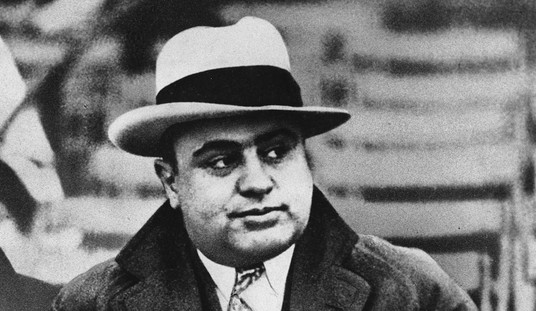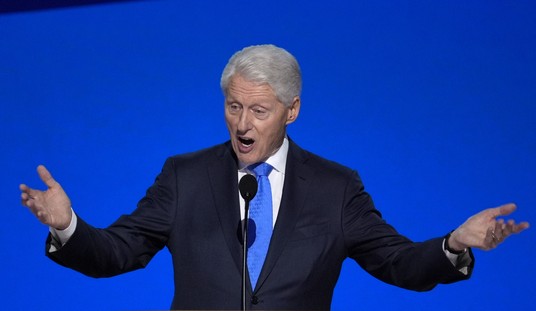My first instinct with any poll that tracks trends in opinion over time is to look hard at the dates and try to find a “magic bullet” explanation. Did something memorable happen around the time that the trend shifted? Polls on many different subjects show a “9/11 effect” in 2001, for instance. The magic-bullet approach is especially tempting when there’s a *sharp* change in opinion. Wars, presidential elections, economic crises — those are all obvious suspects when the public’s view of a major issue takes a left or right turn in a short period of time.
I’m searching for the magic bullet in this new Gallup data on life imprisonment versus capital punishment and not finding it, though.
Is there one?

Although the recent shift towards life imprisonment looks “sharp” at first glance, this is actually the first data that Gallup has gathered on the topic since 2014. It could be, in other words, that Americans’ preference for life over death has been rising steadily by three or four points per year over the last five years and we didn’t realize it because Gallup wasn’t measuring it. A gradual change would also jibe with the long-term trend captured in the graph since the mid-1980s showing preferences for the death penalty gradually giving way to a period of ambivalence during the Bush and Obama eras and now finally becoming a solid preference for life.
So no magic bullet, perhaps. But then … why has opinion shifted so much? For the first time in decades, support for life imprisonment over death is a majority position. And not a slim majority either.
One possibility is partisanship. We live in an age of polarization, when the left has been drifting ever further leftward. We might expect to find them turning overwhelmingly against death when given the option of life in prison instead — and we do. Per Gallup’s new numbers, Democrats have gone from 60/37 in favor of life over capital punishment five years ago to 79/19 now. But there’s a problem: Republicans have also shifted a bit towards life, from 29/68 in 2014 to 39/58 today. Independents too, from 44/50 to 60/35(!). It ain’t just lefties who are driving this.
Another possibility is presidential effects. Sometimes, as with opinion on abortion, public sentiment on an issue is driven by a reaction to whichever party controls the White House. Undecideds may lean pro-choice when Republicans are in charge, fearing that social conservatives will overreach in regulating the practice, and then lean pro-life when Democrats are in charge, fearing that liberals will make it too easy. There’s no strong evidence of a presidential backlash in the life/death data above, though. The sharp decline in preference for capital punishment that happened in 2000 was measured in a poll conducted months before Bush won. And opinion remained basically flat throughout his and Obama’s presidencies despite their partisan differences.
It’s possible that there’s been a backlash to Trump and we just can’t see it in the data because Gallup wasn’t polling on this question every year since 2014. Maybe Democrats and independents are spooked by having a “law and order” right-wing president in charge who prides himself on being “tough” and are pushing back against that by becoming more ardent in their preference for life sentences. But that’s hard to square with the fact that a majority of the public remains in favor of keeping the death penalty instead of abolishing it altogether — 56 percent according to today’s numbers (although that’s among the lowest support since the mid-1970s). If fear of Trump-inspired prosecutors going hog wild with death sentences is what’s behind the trend, people should be giving up on capital punishment altogether, no?
From last November, here’s one likely explanation for the change in preferring life in prison to death:

Americans are finally getting it through their thick heads that they’re much safer from crime than they used to be. A lot. Big time. Go look at the rate at which crime has fallen since the mid-1990s, when support for capital punishment was at its height, and compare it to the graph above showing surprisingly little change over time until very recently in how people rate the severity of the country’s crime problem. They finally seem to have digested the fact that crime has been in free fall throughout much of the country for years; either that or some just feel safer since Trump was sworn in. Either way, the less threatened one feels by crime, the less eager one is likely to be to demand the maximum penalty to deter it. Result: More support for life sentences over death sentences.
But now we’re flirting with a magic-bullet explanation and there’s surely more to it than that. I don’t know how to quantify it but my sense is that there’s greater awareness now of the risk of wrongful convictions than there was even five years ago. The “Making a Murderer” series on Netflix made Steven Avery and Brendan Dassey — and Kathleen Zellner, who specializes in getting convictions overturned — nationally famous. Media attention to other abuses of the justice system, like a string of sensational cases of dubious shootings by police, has doubtless lead some to question the reliability of the entire system, including convictions and sentencing. And the Innocence Project continues to secure exonerations of jailed men, with another case in the national spotlight right now. Just three days ago, national newspapers carried a story about three convicts who were released from prison after serving 36 years for a murder they didn’t commit.
At a certain point, those with soft preferences for capital punishment over life imprisonment look at all that and think, “Not worth the risk.”
But I don’t know, maybe there is a magic bullet here that better explains the drift in opinion over time. Is there?








Join the conversation as a VIP Member